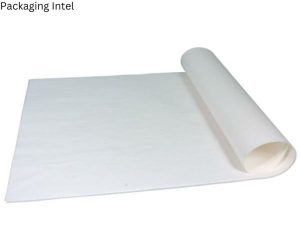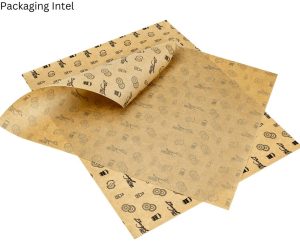Greaseproof paper, a staple in kitchens and food establishments worldwide, is a versatile material renowned for its ability to repel oil and moisture. This article delves into the origins, composition, benefits, applications, and sustainability aspects of shedding light on its significance in various industries.
Composition and Manufacturing Process
Wax Paper is typically made from wood pulp, which undergoes a specialized manufacturing process to enhance its resistance to oil and moisture. The paper is treated with additives or coatings, such as silicone, to impart its characteristic greaseproof properties.
Benefits of Greaseproof Paper
Oil and Grease Resistance
Greaseproof paper effectively prevents oil and grease from penetrating through, keeping food items fresh and preventing contamination.
Moisture Resistance
Its moisture-resistant properties ensure that food remains crisp and free from sogginess, preserving its quality during storage and transportation.
Heat Resistance
Greaseproof paper can withstand high temperatures, making it suitable for use in ovens and microwaves without compromising its integrity.
Eco-Friendly Nature
Unlike plastic alternatives, Wax Paper is biodegradable and compostable, making it an environmentally friendly choice for packaging and wrapping.
Applications of Greaseproof Paper
Food Packaging
Wax paper is widely used for packaging various food items, including baked goods, fried snacks, sandwiches, and deli meats.
Baking
In baking, greaseproof paper serves as a non-stick surface for lining baking trays and pans, preventing food from sticking and ensuring easy cleanup.
Wrapping
It is commonly employed for wrapping sandwiches, burgers, and other grab-and-go food items, providing a convenient and hygienic packaging solution.
Crafting
Beyond culinary applications, greaseproof paper finds use in arts and crafts projects, such as wrapping gifts, creating origami, and making paper decorations.
Types of Greaseproof Paper
Greaseproof paper comes in various types to suit different preferences and applications. Factors such as bleaching, coating, and coloration influence its properties and suitability for specific uses.
Bleached vs. Unbleached
Bleached wax paper or greaseproof undergoes a whitening process to achieve its pristine appearance, while unbleached variants retain their natural color and texture.
Colored vs. White
Colored wax paper or greaseproof adds a vibrant touch to packaging and crafting projects, offering a range of hues to suit diverse aesthetic preferences. White Wax paper, on the other hand, provides a classic and versatile option for everyday use.
Standard vs. Silicone Coated
Standard greaseproof paper offers basic oil and moisture resistance, while silicone-coated variants provide enhanced performance, particularly in high-temperature environments.
Sustainability of Greaseproof Paper
As consumer demand for sustainable packaging grows,wax paper or greaseproof stands out as an eco-friendly alternative to plastic and foil packaging materials. Its biodegradability and compostability make it a preferred choice for environmentally conscious consumers and businesses alike.
How to Use Wax Paper Effectively
To maximize the benefits of greaseproof paper, ensure proper usage and handling. When wrapping food items, fold the edges securely to prevent leakage, and avoid exposing the paper to excessive heat or moisture.
Tips for Choosing the Right Greaseproof Paper
Consider the specific requirements of your application, such as food type, temperature, and packaging method, when selecting Wax paper. Choose a suitable thickness and coating level to ensure optimal performance and durability.
Greaseproof Paper vs. Wax Paper
While both greaseproof paper and wax paper offer non-stick properties, they differ in composition and usage. Greaseproof paper is treated with additives to resist oil and moisture, making it ideal for food packaging and baking, whereas wax paper is coated with wax and is primarily used for lining trays and wrapping food for short-term storage.
Wax Paper OR Greaseproof in the Culinary World
In professional kitchens and bakeries, greaseproof paper is indispensable for maintaining food quality and hygiene standards. Its versatility and reliability make it a preferred choice among chefs and foodservice professionals for various culinary applications.
Innovations and Future Trends
With ongoing advancements in materials science and packaging technology, the future of wax paper or greaseproof looks promising. Innovations such as biodegradable coatings and recycled paper sources are likely to further enhance its sustainability and performance.
Conclusion
Greaseproof paper continues to play a vital role in food packaging, baking, and crafting, offering unparalleled oil and moisture resistance along with eco-friendly credentials. Its versatility, reliability, and sustainability make it a preferred choice for businesses and consumers seeking effective and environmentally conscious packaging solutions.



